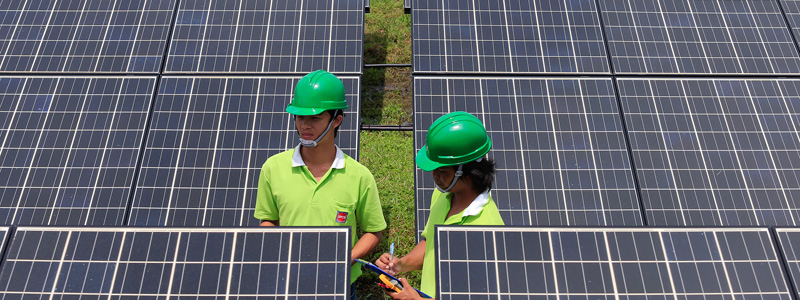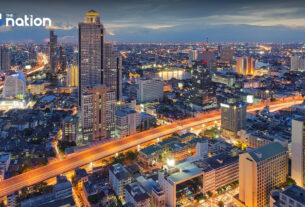Thailand, Malaysia and the Philippines are making serious efforts to become hotspots for solar development as interest in PV grows across Asia. Thailand alone already has reached more than 1 GW of installed solar.
And that is set to dramatically increase, said Josefin Berg, senior analyst at IHS. Any newly proposed solar project in the country can currently take advantage of generous government incentives that are attracting developers.
Kyocera Corporation spokesperson Hina Morioka said: “Thailand has incentives such as feed-in tariff [FiT] system and we are expecting market growth in this country.”
This FiT, however, will expire in March 2016, which has led to a flurry of proposals for new solar projects, with 600MW planned in the next few months.
Malaysia’s solar market has also benefited from a feed-in tariff, but unlike Thailand, said Berg, it does not suffer from a confusing regulatory framework. The opaque way in which FiT quotas are awarded is a complicating factor, though.
However, said Berg, the authorities have invested in a new computer system which is intended for the purpose of making the process more transparent.
The country already has around 220 MW of PV installed and the government has plans to auction off 200 MW annually for the next five years.
But according to news reports, Tenaga Nasional Bhd, Malaysia’s largest listed utility, already has its sights on over 50% of this capacity, somewhat restricting the opportunities for foreign developers.
Another market to watch is the Philippines. The country “has 145 MW installed according to our assessment, and more than 600 MW under construction,” said Berg.
A key foreign player in the country is Germany’s Conergy, which last month closed a joint venture deal that will add 201 MW of PV to the Philippines’ installed base.
The company has six other projects on the boil there, too, and has won recent contracts in Thailand and Indonesia.
The latter is a market that is big on promise but still struggling to deliver results, said Berg, who categorised it as “the next tier down” from Thailand, Malaysia and the Philippines.
“Indonesia is a high potential market, but has been slow to take off: 19 MW of tenders have been awarded,” she stated. “The first 3 MW are set to start construction by Conenergy.”
Another country in the “lower tier” of new solar markets in the region is Vietnam.
With solar resources comparable to countries such as Italy, Spain and California, and being one of the fastest growing economies in the continent, Vietnam’s electricity demand grew 15% over the last decade and the use of diesel-based generators is becoming common in cities and factories subject to blackouts and load shedding during peak hours.
Conergy’s senior manager for project development and finance, Scott Griffiths, told Solarplaza: “We haven’t actively targeted Vietnam because of the low power prices and have not seen many government solar programs. “But we do believe there is large potential there and would like to keep a close eye on the market.”
Other companies are already active in the country. Last week, South Korean Hanwha Group announced a US$ 200 million investment in a 200 MW plant in the province of Thua Thien-Hue; a couple of months ago, Vietnamese firm Thien Tan had started the construction of a 19.2 MW solar project in the province of Quang Ngai for US$ 40 million.
Although there is a range of incentives under discussion for solar in Vietnam – in terms of investment capital, tax and land-use rights – they are currently only proposals from the Ministry of Industry and Trade, and not hard and fast policy to build upon on the short term.
With mushrooming demand for energy to fuel growing economies, it’s not hard to see why Asian markets outside the top three of China, India and Japan are increasingly considering solar, said Tyler Ogden, an analyst at Lux Research.
The downsides to investing in these potential markets are pretty obvious too, he said. Lack of political and legislative stability, unreliable infrastructure and difficulties connecting to the grid all loom large.
Renewable targets in the area are non-binding, legally. And governments in the region will be investing heavily in more coal plants, indicating that their long-term commitment to renewables may be somewhat ambivalent.
Nevertheless, the increasing level of solar activity means there could be growing opportunities for investors and developers willing to take the chance on Asia’s newest PV markets.
Source: http://www.solarplaza.com/channels/markets/11453/asias-under-radar-solar-markets/



